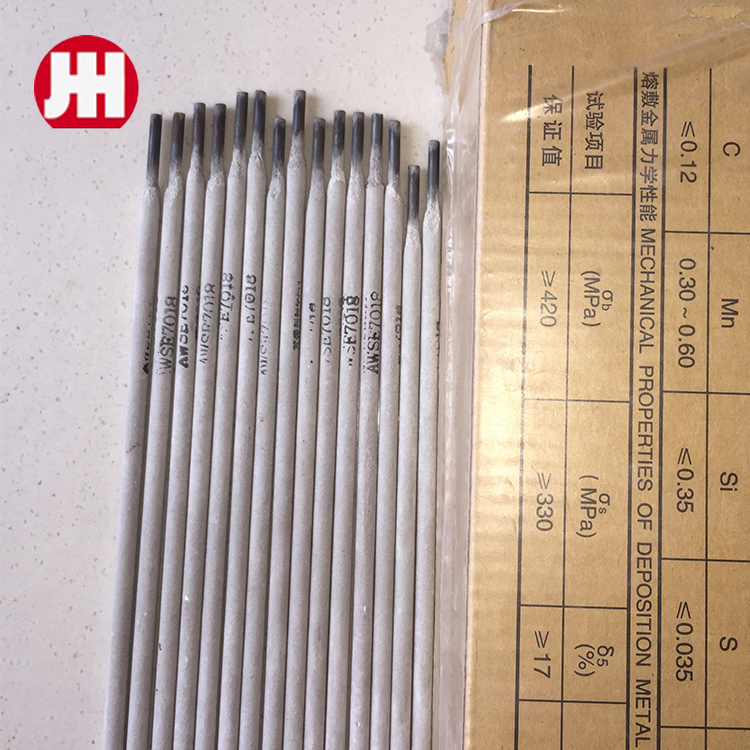E7018 Welding Electrode Guide for Optimal Performance and Applications in Welding
E7018 Welding Electrode A Comprehensive Overview
The E7018 welding electrode is a popular choice among welders for various applications due to its exceptional performance in producing high-quality welds. Recognized for its versatility and ease of use, the E7018 is an ideal electrode for both amateur and professional welders. This article will explore the characteristics, benefits, applications, and best practices associated with the E7018 welding electrode.
Characteristics
The E7018 electrode is classified as a low hydrogen, iron powder rod. The E signifies that it is an electrode, while the 70 indicates the minimum tensile strength of 70,000 psi that it can yield. The 1 denotes that it can be used in all positions of welding, and the 8 indicates a low hydrogen content, which is crucial for preventing weld cracking. The low hydrogen formulation of this electrode makes it especially suitable for steel welding applications, particularly in conditions where high strength is a requirement.
The coating on the E7018 electrode includes a complex chemical mixture, which assists in stabilizing the arc during the welding process and improving the overall quality of the weld bead. This coating also helps in producing a smooth and clean finish, which is desirable in many welding projects.
Benefits
One of the primary advantages of using the E7018 electrode is its ability to create strong and ductile welds that exhibit excellent resistance to cracking. This property is particularly beneficial when welding high-strength steel and other alloy materials. The low hydrogen content also minimizes the risk of hydrogen-induced cracking, which is a significant concern in welding applications involving susceptible metals.
Additionally, the E7018 electrode's versatility allows it to be used in various welding positions, including flat, horizontal, vertical, and overhead, making it suitable for diverse projects ranging from structural steel fabrication to heavy equipment repair. The smooth arc and stable bead produced by the E7018 also contribute to a more aesthetically pleasing weld, which can reduce the need for post-welding cleanup.
e7018 welding electrode

Applications
The E7018 welding electrode is utilized across multiple industries, such as automotive, construction, shipbuilding, and general manufacturing. It is an excellent choice for applications that require joint integrity and strength, including heavy structural components, frames, and pressure vessels. Additionally, its performance in high-impact and fatigued environments makes it a common choice for welding in pipelines and other critical infrastructure.
Given its exceptional mechanical properties, the E7018 is often employed in welding procedures that adhere to stringent codes and standards, such as those established by the American Welding Society (AWS) and the American Society of Mechanical Engineers (ASME).
Best Practices
For optimal performance while using E7018 electrodes, certain best practices are recommended. First, proper electrode storage is crucial, as the low hydrogen coating must remain dry to maintain its effectiveness. Electrodes should be kept in a heated rod oven before use to minimize moisture absorption.
Another key factor is maintaining the correct welding parameters, including amperage and travel speed. A local welding expert can help determine the best settings based on material thickness and joint configuration. Moreover, the welder should ensure that the base materials are clean and free of contaminants that could compromise weld quality.
In conclusion, the E7018 welding electrode is a reliable and versatile choice in the world of welding. Its unique properties make it suitable for a wide array of applications, and its benefits far outweigh the challenges associated with its use. By following best practices, welders can harness the full potential of E7018 electrodes, resulting in strong, durable, and aesthetically pleasing welds that meet professional standards. As industries continue to evolve, the E7018 electrode remains a steadfast option for quality and performance in welding projects worldwide.
-
E316L Welding Rod: Premium 316L Stainless Steel WeldsNewsAug.11,2025
-
Premium SG2 Welding Wire | High-Quality MIG/MAG for SteelNewsAug.10,2025
-
E309 Welding Electrode: Premium Stainless Steel Stick RodsNewsAug.09,2025
-
Premium Solid MIG Wire for Strong, Reliable WeldsNewsAug.08,2025
-
E6010 Cellulose Electrode: Deep Penetration Steel Welding RodNewsAug.07,2025
-
Premium E316L Welding Rod for 316L Stainless SteelNewsAug.06,2025


